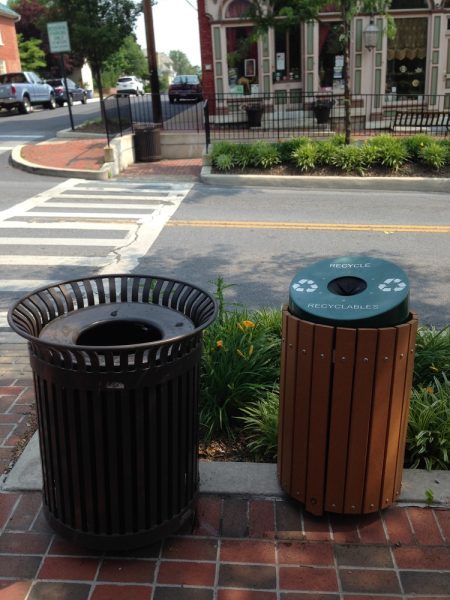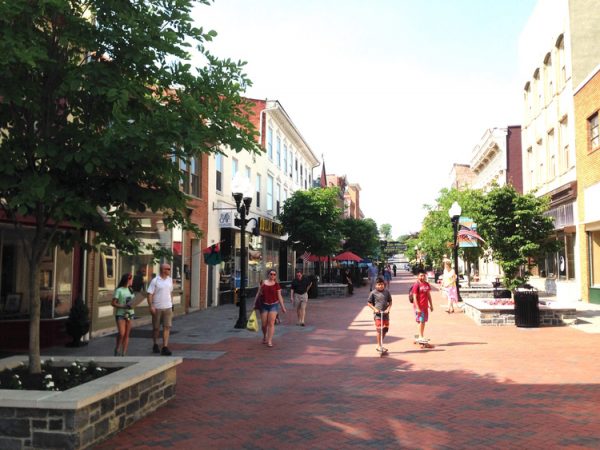This article is presented via a Weelunk partnership with Dateline:Wheeling.
For more great Lee Chottiner stories, poetry, and images that focus on Wheeling, go to DatelineWheeling.com
Looking for ways to make Wheeling more livable? I have a suggestion: Get out of town.
Not for good, mind you. But taking a few days to travel to other cities—walking around and speaking to the people—is a great way to turbo charge your imagination and bring fresh ideas back to the Friendly City. The trick is to share those ideas once you get home, to actually act upon them.
I just had one such experience when my family visited the Eastern Panhandle and some nearby towns. We particularly targeted Shepherdstown, a bucolic place along the Potomac River, and Winchester, Va., a historic town in the Shenandoah Valley.
In many ways, both cities are much like Wheeling. All three have rich Civil War histories, beautiful period buildings, local universities, and a core of young people—large or small. They’re also close to major cities: Shepherdstown and Winchester to Washington, Wheeling to Pittsburgh and Cleveland.
So why are the downtowns of Shepherdstown and Winchester thriving while Wheeling’s is not?
Here are some possible reasons. Together they comprise a wish list of sorts for Wheeling. I hope they generate some discussion at the very least and some action at the very most:
• Dog-friendly businesses: My wife, Beth, our daughter, Noa, and I were strolling down German Street, Shepherdstown’s main drag, one afternoon when I decided to slip into the local bookstore, Four Seasons Books. Since we had Guthrie, our pet basset hound with us, Beth offered to hang out on a sidewalk bench with Noa and the dog for a few minutes while I got my bookstore fix.
Almost as soon as I walked in, did I dash out and call after Beth and Noa to come in withGuthrie. It turned out that the store was dog friendly. Indeed, most of German Street was.
Jan Hafer, director of the Shepherdstown Visitors Center, said the idea grew out of the town’s annual DogFest, which runs from Aug. 15-16. Frankly, she said businesses, including restaurants, balked at first, thinking it was against state law to bring dogs inside their stores.
It wasn’t.
“We found [after some research] that it’s perfectly fine to have dogs in restaurants as long as they’re not in the food prep area,” Hafer said.
Today, she estimates three-quarters of Shepherdstown’s businesses have a paw decal on their shop windows identifying them as dog friendly; many of them also keep water bowls outside for thirsty canines.

What a great idea! It’s a convenience to shoppers to know that virtually an entire business district welcomes their pets. It’s a little thing, but it’s something people remember and a good reason to keep coming back. Can you say, think outside the box?
• Easy recycling: Shepherdstown has paired a recycling bin with a trash can on just about every street corner on German Street. It’s a little thing, but downtown Shepherdstown is clean, and those cans are a reason why; you make it easy to recycle, and people will do it. Those recycling bins also send a clear message to visitors: Shepherdstown cares about the way it looks. That resonates with people and makes them want to come back. (I’ve been visiting Shepherdstown for years.)
“When you see those recycling bins out front and you see dog waste stations where [people] can bag and dispose of it properly, it raises the awareness of people,” Hafer said. “I can say people are impressed with that; I’ve heard comments. And it keeps our streets cleaner. It’s a common sense thing.”

• Front page style: Imagine my surprise one day when I picked up the local newspaper, The Shepherdstown Chronicle, to find the lead story—above the fold, below the flag—reporting that eating locally grown food improves nutrition, lessens obesity and sustains the environment. A newspaperman for 30 years, I had frankly bought into the industry mindset that lifestyle stories belong on the inside page, not the front page. But here’s an example of a paper understanding that lifestyle issues have real import. It isn’t all about politics.
• Pedestrian malls: Here’s something that requires years of planning by a city’s stakeholders, but when we took a side trip to Winchester, Va., to see an old friend, we were surprised to find a bustling downtown with restaurants, historic sites, museums, and specialty stores. Most of them were on or near a pedestrian walkway.
Winchester had closed one of its main downtown arteries, Loudon Street, to traffic. On both ends of the four-block concourse were erected overhead signs welcoming shoppers and diners to “Old Town Winchester.” There were attractions for children, a museum for history buffs, stores for shoppers and few good pubs for beer lovers. On a narrow alley, a half block off Loudon, the city even built an outdoor amphitheater on a vacant lot where a building once stood.

Old Town Winchester is not an anomaly. On our way home, we stopped in Cumberland, Md., to discover that city had done the same thing in its historic downtown. Now picture Wheeling doing such with its impressive facades on the 1400 block of Market Street, feeding off the energy from West Virginia Independence Hall and West Virginia Northern Community College. It wouldn’t happen over night, but with vision and perseverance by people with clout, it could happen.
• Downtown green space: Berkeley Springs, home to America’s first spa, a place where George Washington stopped to take the cure, is built around a city square park. This green space fronts hotels, storefronts, the county courthouse and the spa itself. The park, with a gazebo at its hub, is the center of activity for the town, a destination attraction of sorts. Now that Wheeling has a hole in the middle of its downtown thanks to the razing—rightly or wrongly—of old structures, a green commons might be the best use for that land. It could be a destination site if properly planned, a place that attracts foot traffic, which, in turn, would draw tenants for the empty storefronts surrounding it.
• • •
As I said at the top, this is just a wish list, something to jog dialogue. I haven’t thought of everything, and I know all too well that each of these ideas comes with its own hurdles to overcome. Nevertheless, the advantages for Wheeling are obvious. I hope you will leave your comments and perhaps add some ideas that you’ve brought home from your own travels. Shepherdstown and Winchester have used their histories and their people as valuable resources. Wheeling can do the same.
Photos by the author




